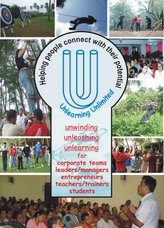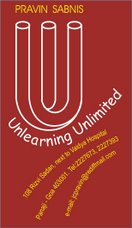Magic has always been fascinating for an audience. The illusionist, as expert magicians call themselves, uses his skill honed over years of consistent practice, the power of engaging speech and innovative set up of a drama. He takes his skill to the level of refined art. The primary motive is to entertain, and surely to an impressive impact.
Many from my tribe of trainers are attracted by the skill of magic and its ability to impress the learners as a tool that intrigues as well as excites the participants at a training workshop. However, while most would reveal the logic behind the magic, there are a few who indulge in deceit by claiming that the trick is based on some special powers of hypnosis.
One such trick is the ‘human plank’. The act involves making a subject lie horizontally between two chairs, making the body rigid and making another volunteer stand upon that person for dramatic effect. Actually the trick requires no hypnosis... rather it depends on the fact that when the subjects are positioned in the appropriate manner, they can support more weight than it may seem possible to the audience.
While it is good for educators to use the magicians’ trick as an activity to aid esteem building, it would be better if we shun the temptation to betray the trust that learners invest in us. The plank of trust between the learner and the teacher should not be built on consciously conceived irrational interpretations of what is a perfectly logical phenomenon. Persons who betray the trust deserve to be exposed for their deceit.
Let’s BE BETTER at honouring the trust learners invest in us
The human plank is a logical possibility, not hypnosis fuss!
- Pravin K. Sabnis
Musings conceived while in Kerala, India.
written by Pravin Sabnis since first Monday of 2004
unlearning unlimited

connecting people to their potential



No comments:
Post a Comment